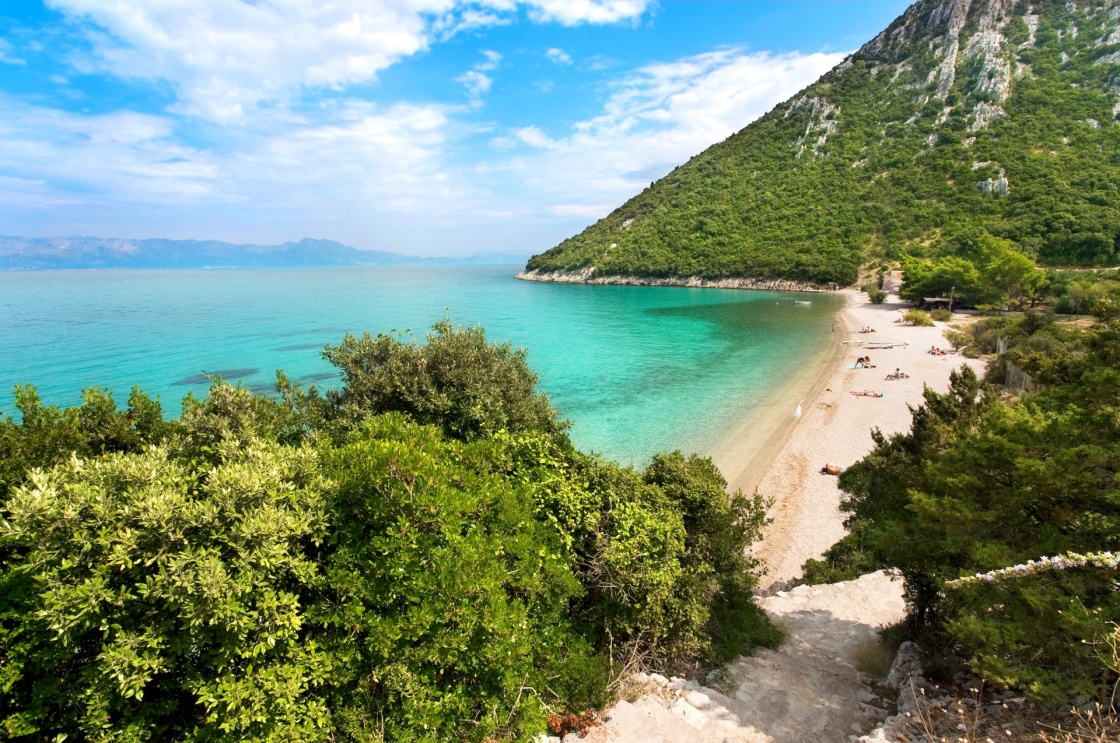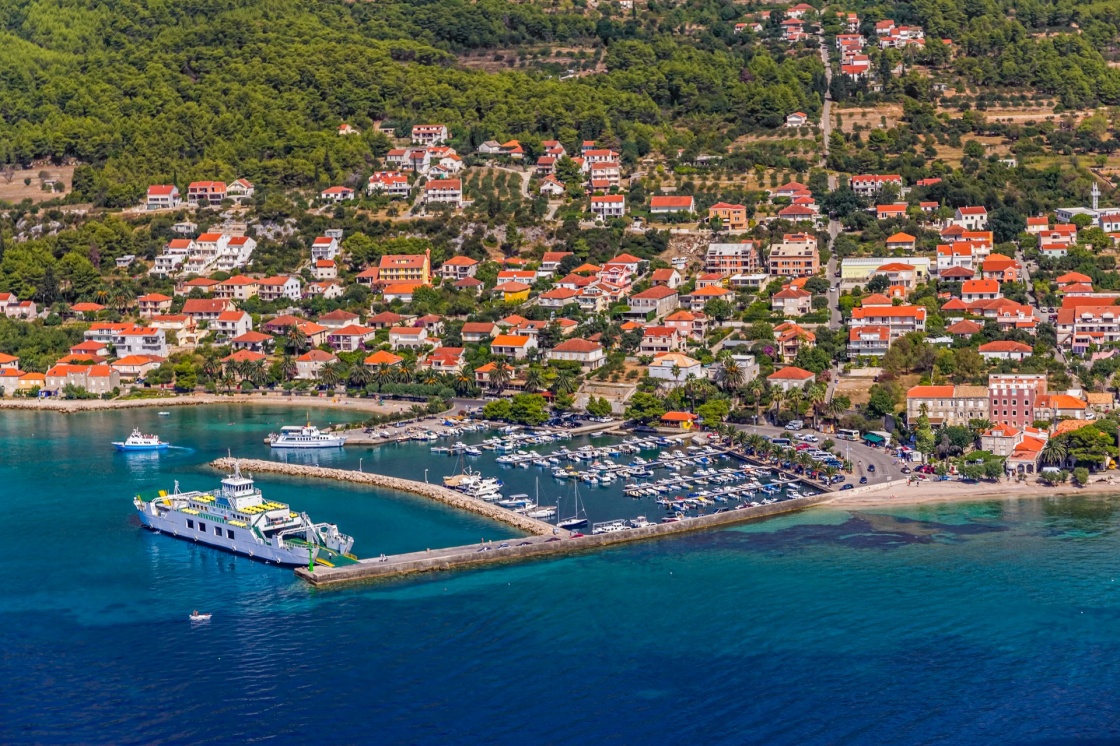Peljesac it the second largest Croatian peninsula, situated in the south waters of the Adriatic Sea, along the Adriatic coast. Surrounded by numerous isles and islands, Pelješac is a place of mild Mediterranean climate, beautiful nature and rich cultural heritage. It is therefore an unavoidable part of the local tourist offer. Apart from blossoming tourism, Pelješac has always been recognized for its rich vineyards and quality wines (Dingač and Postup are among the most appreciated).
The history of Peljesac is rich and interesting, dating back as far as the Neolithic period of the Stone Age. There are numerous stone findings scattered throughout the peninsula. In the later periods of Metal Age, Illyrian tribes inhabited Peljesac, bringing the Greek cultural influences that gradually formed specific and recognizable Mediterranean culture. There are several preserved Illyrian sanctuaries in the Peljesac area. Romans invaded Pelješac in 2nd century before Christ, maintaining their domination until the medieval times. In the 14th century Peljesac became part of the Republic of Ragusa, finally welcoming the era of prosperity and significant economic and cultural development. It was the time when the city of Ston was built and fortified with strong walls to protect the salt production, one of the cornerstones of Dubrovnik’s prosperity and power. Those 5 km long walls have been preserved until the present day, as the longest fortification system of that kind in Europe. In the following centuries, Peljesac shared the destiny of Dubrovnik, surviving through French and Austrian domination in the 19th century and through the Serbian aggression in 1991.
In modern times Pelješac has primary been perceived as an agricultural area, with its fertile lands suitable for typical Mediterranean cultures: olives, grape wine and citrus fruits. But the beauty of vineyards and olive tree plantations surrounded by untouched Mediterranean evergreen forests, the crystal clear blue sea with numerous lovely beaches – it is simply impossible to ignore the beauty of this peninsula. Peljesac is today among the most desirable tourist destinations of the region. Apart from immense richness of the peninsula vegetation, you can admire the diversity of wild animal species inhabiting Peljesac, some of them endemic.

 'Croatian Beach, Beautiful Divna Bay On Peljesac Peninsula, ' - Jenny Sturm / Shutterstock
'Croatian Beach, Beautiful Divna Bay On Peljesac Peninsula, ' - Jenny Sturm / ShutterstockPelješac is fairly easy to reach, whether you are arriving from Split or Dubrovnik airport; Pelješac is well connected through regional roads and with regular bus lines. There are ferry lines as well, connecting Pelješac with Ploče, Korčula and Mljet all year long.
Although there are no hotels on the peninsula of Peljesac; there are countless private accommodation facilities offering a lovely place to stay in some of the Peljesac settlements like Ston, Žuljana, Dingač and Lovište. The prices of accommodation range from 10 to 15 euros per day.
Mediterranean climate provides perfect weather conditions for the ideal summer vacation. Therefore, the tourists visit Peljesac mostly in the warmer part of the year, determined to enjoy the benefits of the sunny weather, fresh air and crystal clear sea. Most of the beaches on Peljesac are covered with pebble or sand and surrounded by the pleasant shade and soothing fragrances of the pine woods and aromatic herbs. Visit Papratno, Vučine, Dingač or Mirce beach and enjoy the beauty of the untouched nature. If you prefer a more active holiday, Peljesac still has a lot to offer. From seawater sports, such as swimming, diving, underwater fishing, wind surfing and kite surfing; you can try some of the team sports, cycling, hiking or caving.











